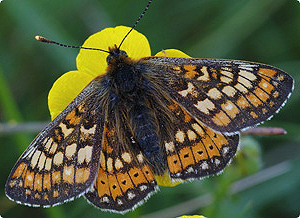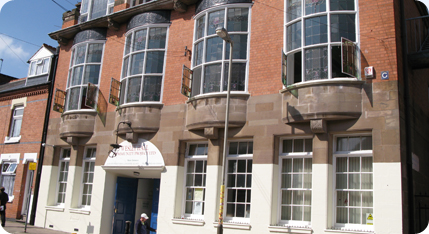Marsh Fritillary
Euphydryas aurinia
Members adopting this butterfly: Ramesh, Musa, Hattise, Douglas, Rupal
Marsh Fritillary Butterfly
The Marsh Fritillary are becoming vulnerable and have been taken into protection to be monitored and controlled. Both sexes of Marsh Fritillary butterflies have a row of spots on the hind wing upper and underside. Female Marsh Fritillaries are slightly larger and paler than male Marsh Fritillaries.
When you might see them
You may find Marsh Fritillaries between the months of mid May and July.
Food
They like to feed on the flower heads of Meadow Thistles. Their main food plant is Devil’s Bit Scabious and honeysuckle.
Where – Habitat
The Marsh Fritillary likes to live in damp tussocky grasslands found in Dorset, Wiltshire, the Cotswolds, Devon and Cornwall and woodland clearings.
Marsh Fritillary Eggs
When the eggs have been laid they will first appear yellow but the colour of the egg will change during time.
When
Marsh Fritillary eggs are laid in large batches during the month of June and July. The eggs are laid on the undersides of their food plants, which is Devil’s-bit Scabious. They are three layers deep and they gradually darken as they age. The egg hatches in three weeks after it has been laid. A female Marsh Fritillary butterfly is able to lay a batch of 150 eggs.
Marsh Fritillary Caterpillar
A Marsh Fritillary caterpillar can grow 26-30mm long. Its body is black with reddish brown legs.
When
After the eggs have been hatched the caterpillars will then spin a dense silk web, which has tiny holes in them to make tunnels that lead to the centre of the plant. The food plant is consumed within the first week and the caterpillar will then have to crawl to a nearby plant where they will repeat the process again.
Food
Marsh Fritillary caterpillars feed on Devil’s-bit Scabious.
Where
You will find this type of caterpillar around their food plants. They live in colonies but soon live alone when they are fully-grown.
Marsh Fritillary Chrysalis
The chrysalis can be 12- 15mm. The colour of the chrysalis is greyish white with yellow and black markings.
When
A Marsh Fritillary will be ready to pupate during the months of April and May.
Where
You will find a chrysalis hanging upside down attached to a leaf or a stem.
Books used to find information
Britain’s Butterflies
A field guide to the butterflies of Britain and Ireland.
Written by David Newland, Robert Still, David Tomlinson and Andy Swash
The Butterflies of Britain and Ireland
Written by Jeremy Thomas and Richard Lewington
Guide to the butterflies of Britain
Written by John Bebbington
Usborne Spotter’s Guides – Butterflies
Written by George E. Hyde
BBC Gardeners World Magazine
Issue July 2011
Click here to go to our Mental Health Services, Members Welcome You page




